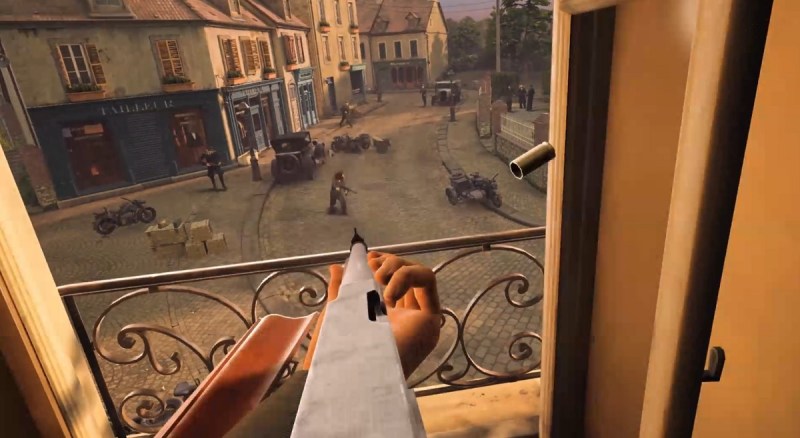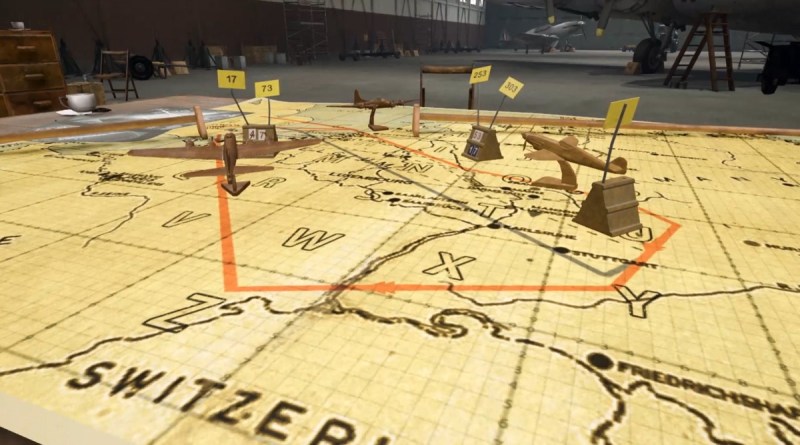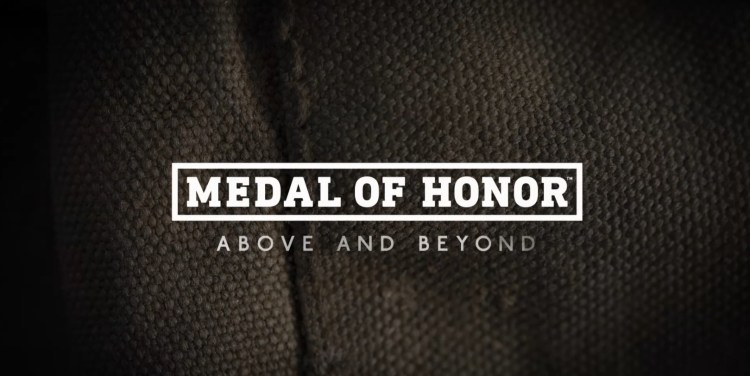Three years ago, Respawn Entertainment began making a new Medal of Honor first-person shooter set in World War II. The team included developers who had worked on the original video game nearly two decades earlier, and they wanted to bring it back. And thanks to a couple of deals, Medal of Honor is coming back as an exclusive 2020 virtual reality title for the Oculus Rift and Rift S, dubbed Medal of Honor: Above and Beyond. It’s a beefy game with more than 50 levels, which means it will have as much single-player gameplay as many standard console video games. It will also have multiplayer gaming.
I heard the story of how this happened in a group press interview with Peter Hirschmann, the director on the project for Respawn, and Michael Doran, executive producer at Oculus.
First, Doran, who previously worked with Respawn at EA, pitched Respawn on doing a game for the Rift. They went along and then EA bought Respawn. The project still went forward, and now there are 180 people working on it, making it perhaps the most ambitious VR project ever. We played part of the game at a demo event and then asked questions.
Here’s an edited transcript of our group interview.
June 5th: The AI Audit in NYC
Join us next week in NYC to engage with top executive leaders, delving into strategies for auditing AI models to ensure fairness, optimal performance, and ethical compliance across diverse organizations. Secure your attendance for this exclusive invite-only event.

Above: Michael Doran of Oculus and Peter Hirschmann of Respawn Entertainment.
Question: I wanted to understand the development timeline. You said you were working on the game, and then Oculus came calling?
Hirschmann: Probably three years ago, Respawn was still independent, but we had a very close relationship with EA. They had done Titanfall and Titanfall 2. We were doing Star Wars with them. An opportunity came along where, well, this is something we wanted to do, but would it be at Respawn?
Again, my history goes back to the very first project. Vince [Zampella, Respawn CEO] and a lot of the core Respawn guys worked on Allied Assault. It was honestly an emotional connection. It’s not like, “Wow, WWII is super hot, let’s go do that.” This was something that a lot of us started our careers doing. I worked at LucasArts for a number of years, so I had been laser sword and hyperdrive stuff. Vince and his team had been doing a lot of modern warfare stuff, and then Titanfall. It felt like there was an opportunity to go back and revisit it.
Question: What was the original plan in terms of platforms?
Hirschmann: It was a crazy time. It was literally a couple of months of just kicking around some ideas. Wouldn’t it be neat to go back? Oculus had been knocking on Respawn’s door for a while. An opportunity had never aligned. It was literally a conference call between Mike, me, and Vince in Vince’s office. Mike said, “Oculus is serious about stepping up the level of software. The way to sell hardware is with triple-A games.”
Again, this is two and a half years ago. We said, “Yeah, that’s great.” We had a lot of Rift fans in the building. But we felt like — you say you want triple-A, but do you really know what that means? That’s years of work. It’s not just the budget. It’s years of time. It takes a long time to make one of these, and the scope and the team size. That wasn’t what we were seeing on the platform at the time.
They said, “No, we’re serious.” I went up to Menlo Park with this pitch and pitched this game. It sounds like such a cliche, but I wanted to throw out the craziest idea possible and see what happened. They bought it in the room, so to speak. “Yeah, let’s do this.” Well, holy shit.
We got to work on it right away. To pre-empt the obvious question, the relationship trailer that was at OC4, it ended with 2019. That was a typo. We just slipped on the keyboard. [laughs] We moved the date just a few months after that, because we had done — we could see what the platform could do. Oculus saw what we were up to. “Let’s make this bigger and expand it.”
I give so much credit to Oculus for stepping up. We’re part of this next generation of software that’s hopefully helping define what triple-A in VR means. There’s some other great stuff coming as well. We’ve been working on it for a while. At its peak, around the world, we added it up, and there are more than 180 people working on this title. It has to be one of the bigger VR games ever put together. Just building it piece by piece. It’s been great.
To be able to show it and reveal it is wonderful. But it’s been a crazy couple of years, and we still have a little ways to go.

Above: The opening mission of Medal of Honor: Above and Beyond. You are in the French Resistance.
Question: You have a lot of things you gain in VR, but you also have these tradeoffs in graphical quality compared to what you can do on a high-end PC. Just looking at it, there are tradeoffs in physics, just how sharp everything looks.
The game’s pretty high-resolution. Again, one of the great things the platform allows is letting us really crank up the level of detail. When you lean in, you see the stitches on a uniform, the binding on a book, the grain in wood. We don’t dial any of that back.
We run at 90 frames per second, too, to prevent motion sickness. That’s a testament to the art team, that they’ve been able to build this level of fidelity with that performance. But I think you’ll see that the physics are pretty spot-on. When you throw a grenade, it has to act the way you think it will. When guys are blown through the air, stuff breaking apart, it has to feel authentic. We’re not downgrading any of that at all. I’m looking forward to everyone getting in there and seeing it in glorious stereo high-res.
Michael Doran: I worked at EA for 13 years, mostly with EA Partners. I worked on Battlefield from its inception through the acquisition of DICE. I never thought I’d get to work on a Medal of Honor game, because there was this friendly not-so-friendly rivalry between Battlefield and Medal of Honor back in those days.
Peter Hirschmann: It’s all one-sided.
Doran: But now it’s all one big happy family. The last project I produced was Titanfall. That’s where I met a lot of the Respawn folks. I had a great experience working on that with them. When I left EA I thought I would probably not work on another Respawn shooter, but Oculus had the right time, the right opportunity. We caught Respawn at the right time, and it’s been a dream to not only get involved with Respawn again, but to get to play in the Medal of Honor sandbox as well.
[Editor’s note: The initial conversation ended here. Then we played the game, and reconvened afterward for a Q&A].
Hirschmann: Did you have fun? That’s the number one goal here.
Question: Yeah, it was good. Do you recommend people actually try to aim down the sights?
Hirschmann: Everyone’s different. Over time, people get into the rhythm of holding with two hands, getting that stability bonus. Then it depends on the weapon. Over time — the Thompson I’m usually hip-firing, or the MP40. Hopefully you got a taste of that. Over the last couple of years we’ve put in a lot of resources and time to make the weapons system feel as natural and intuitive as possible. Those of you who’ve been playing VR for a long time — it’s tricky to get that to feel right. We try to give every weapon — not just every class, but every weapon itself — its own individual character.
For me, the big example is the Colt and the Thompson are really great weapons in the Allied arsenal, but when the magazine’s empty you have to eject it, pull out a new one, put it in, and charge the weapon. When you fire the M1 Garand, bang-bang-bang-ping!, it ejects the clip, and all you have to do is slap a new one in. Hopefully the player at home will learn, “Okay, that’s why our guys loved the Garand.” But over time the Germans figured out that when you hear that ping, the guy shooting at you is out of ammo.
We have a whole set of logic hooks where when the players use the M1, that ping announces the clip ejecting, they’ll hear it, and they’ll say in German, “Hear that?” They’ll leave cover and charge you. No matter what’s going on, if you’re reloading that M1 or pulling a pistol or grabbing something else, you’re vulnerable for a moment. That’s what guys went through back in the war.
Those kinds of moments are subtle, but again, it goes to that authenticity that we’re trying to get to. VR and the Rift allow us to do that in a way that we never could before with a traditional console game. The physical act of having to load that clip or that magazine is part of the experience. Hopefully that makes it more fun.

Above: VR finally goes to World War II with Medal of Honor: Above and Beyond.
Question: Will this be desktop only?
Hirschmann: Rift only, Rift all the way. We love the Rift. Rift and Rift S.
Question: Are there any other Medal of Honor games coming out on any other platforms?
Hirschmann: One game at a time. [laughs] Medal of Honor, 24/7.
Question: Does that push Titanfall 3 out further?
Hirschmann: [laughs] Yes, it puts Titanfall 3 further out. For a lot of us — again, I said this before. This is such a great day to be able to show it. We’ve been, pardon the expression, hunkered down on it for a couple of years now. To even say Medal of Honor out loud is kind of nutty. Project Rocket is the code name we used with outside parties. This is an exclusive, all-encompassing effort.
Question: Is it only single-player?
Doran: We do have multiplayer. We’re not really talking about it yet. We’re focusing on working with Dale and bringing Medal of Honor back. More to come on that. It will be ready at launch.
Hirschmann: Institutionally, we have some of the best multiplayer designers in the industry. I’m biased a bit. But from the Call of Duty days at Infinity Ward to Titanfall, some of those folks are on our team.
Question: I found the turn a bit abrupt and disorienting, how you can turn your body around. What kind of problems did you overcome or other options did you have with that?
Hirschmann: We allow you, in the comfort menu, to adjust that. It can be the instant flick. It can be much more gradual. We contextualize all those comfort options. We actually add a narrative context to all the comfort options. At the beginning of the game you go to the nurse’s office and basically do a physical. Are you left-handed or right-handed? Does this make you nauseous? Do you get motion sickness?
What we’ve learned over the last couple of years is that every player is different. There’s no profile that fits every person. Something that makes someone queasy doesn’t bother another person, but something else will. We’re trying to build as many individualized options as possible. There’s only a handful in right now, but we’re constantly adding more. From the vignettes to — anything you can think of, we try to find a way to put a hook in it.
Doran: Vibration, movement speed. There’s all kinds of stuff. It’s all about optionality.
Hirschmann: There’s even a “skip intense sequences.” For the levels where you’re on the motorcycle or skiing down a mountain, if that’s something you just don’t think you can handle, we’ll let you skip that. There will be a narrative beat. “You made it down.” The narrative keeps moving forward.
VR legs is a real thing. The more time you spend in the headset, the more comfortable you get, the more your brain adapts. For all of us on the dev team, it’s always important that we’re constantly running people from the company, from Respawn, through the game to see them play it.

